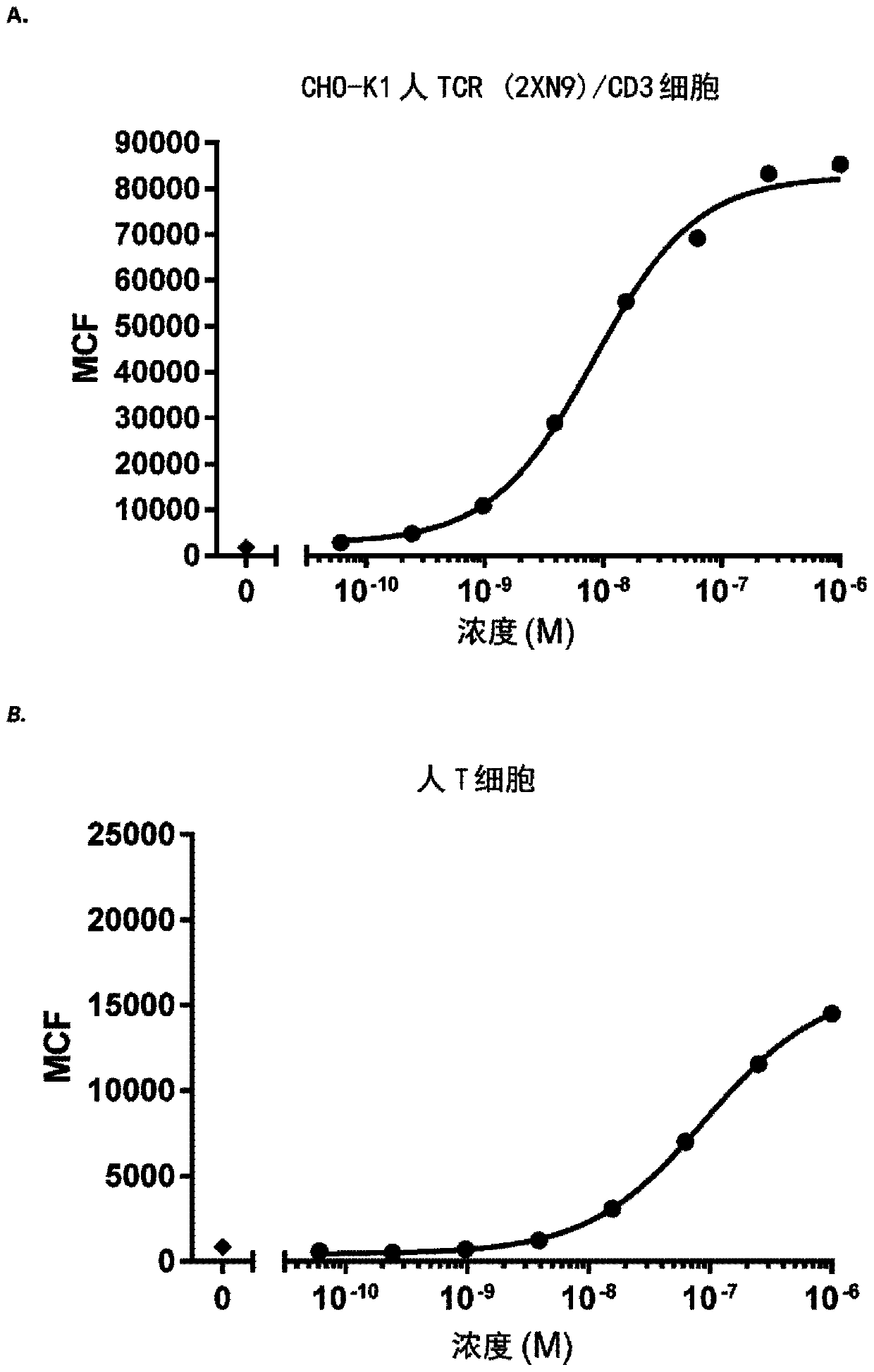T cell recruiting polypeptides capable of binding cd123 and tcr alpha/beta
A cell and cell receptor technology is applied in the field of a carrier for producing the polypeptide of the present invention, a monovalent CD123-binding polypeptide, and a kit for providing the polypeptide of the present invention, which can solve problems such as manufacturing
- Summary
- Abstract
- Description
- Claims
- Application Information
AI Technical Summary
Problems solved by technology
Method used
Image
Examples
example 30
[0922] More specifically, the polypeptides of the invention induce T cell activation, wherein said T cell activation causes IFN-γ secretion at an average EC50 value between 100 nM and 10 pM, such as an average EC50 value of 50 nM or below, such as less than 40, 30 , 20, 10 or 9 nM or even less, such as less than 8, 7, 6, 5, 4, 3, 2 or 1 nM or even less, such as less than 500 pM or even less, such as less than 400, 300, 200 or 100 pM Or even less, said EC50 values are eg determined in an ELISA based assay, eg as further explained in Example 30.
[0923] More specifically, a polypeptide of the invention induces T cell activation, wherein said T cell activation causes IL-6 secretion with an average EC50 value between 100 nM and 10 pM, such as an average EC50 value of 50 nM or below, such as less than 40, 30, 20 or 10 nM or even less, such as less than 9, 8, 7, 6, 5, 4, 3, 2 or 1 nM or even less, such as less than 500 pM or even less, such as less than 400, 300, 200 or 100 pM or...
Embodiment 31
[0925] Accordingly, the present invention relates to a polypeptide wherein said T cell activation results in depletion of plasmacytoid cells (pDC) and basophils.
[0926] In another aspect, the multispecific polypeptides of the invention can further elicit T cell proliferation. (See Example 39)
[0927] Accordingly, the present invention relates to a polypeptide, wherein said T cell activation results in proliferation of said T cell.
[0928] The multispecific polypeptides of the invention comprise one or more ISVs that specifically bind CD123, which ISVs have been carefully selected for their specificity. Thus, the multispecific polypeptides of the invention exhibit highly specific binding to CD123, which enables them to kill target cells expressing CD123. In contrast, only minimal killing was observed in the absence of CD123 expressing cells, emphasizing the safety of the polypeptides of the invention.
[0929] Thus, in another aspect, the invention relates to polypeptide...
Embodiment 36 to 38
[0930] More particularly, the invention relates to a polypeptide wherein T cell activation of CD123 negative cells induces lysis of no more than about 10%, such as less than 9%, such as 8, 7 or 6% or even less, said lysis being e.g. Determined as the mean percent lysis in a flow cytometry-based assay with TOPRO3 readout using CD123-negative cells (e.g., U-937 or NCI-H929 cells) as target cells and human T cells as effector cells , the ratio of effector cells to target cells was 10:1.
[0931] More specifically, the present invention relates to a polypeptide that does not induce the secretion of IFN-γ and IL-6, eg as determined in an ELISA-based assay, in the presence of CD123 negative cells.
[0932] The inventors have observed that certain multispecific polypeptides of the invention, comprising a TCR-binding ISV of the invention and one or more CD123-binding ISVs of the invention, are particularly suitable for redirecting T cells to kill CD123 expressing cells. With these m...
PUM
| Property | Measurement | Unit |
|---|---|---|
| affinity | aaaaa | aaaaa |
Abstract
Description
Claims
Application Information
 Login to View More
Login to View More - R&D
- Intellectual Property
- Life Sciences
- Materials
- Tech Scout
- Unparalleled Data Quality
- Higher Quality Content
- 60% Fewer Hallucinations
Browse by: Latest US Patents, China's latest patents, Technical Efficacy Thesaurus, Application Domain, Technology Topic, Popular Technical Reports.
© 2025 PatSnap. All rights reserved.Legal|Privacy policy|Modern Slavery Act Transparency Statement|Sitemap|About US| Contact US: help@patsnap.com



